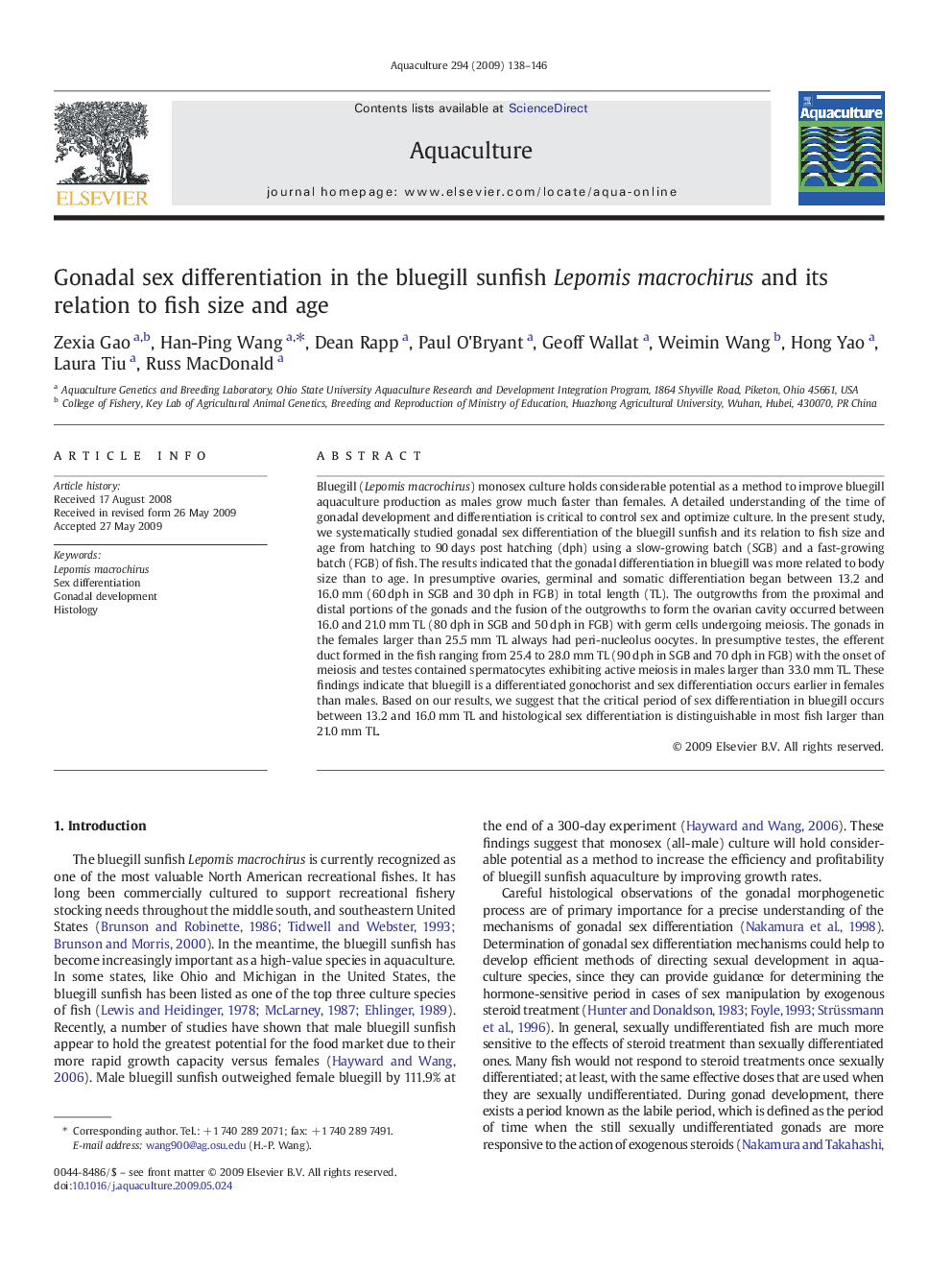| Article ID | Journal | Published Year | Pages | File Type |
|---|---|---|---|---|
| 8496136 | Aquaculture | 2009 | 9 Pages |
Abstract
Bluegill (Lepomis macrochirus) monosex culture holds considerable potential as a method to improve bluegill aquaculture production as males grow much faster than females. A detailed understanding of the time of gonadal development and differentiation is critical to control sex and optimize culture. In the present study, we systematically studied gonadal sex differentiation of the bluegill sunfish and its relation to fish size and age from hatching to 90Â days post hatching (dph) using a slow-growing batch (SGB) and a fast-growing batch (FGB) of fish. The results indicated that the gonadal differentiation in bluegill was more related to body size than to age. In presumptive ovaries, germinal and somatic differentiation began between 13.2 and 16.0Â mm (60Â dph in SGB and 30Â dph in FGB) in total length (TL). The outgrowths from the proximal and distal portions of the gonads and the fusion of the outgrowths to form the ovarian cavity occurred between 16.0 and 21.0Â mm TL (80Â dph in SGB and 50Â dph in FGB) with germ cells undergoing meiosis. The gonads in the females larger than 25.5Â mm TL always had peri-nucleolus oocytes. In presumptive testes, the efferent duct formed in the fish ranging from 25.4 to 28.0Â mm TL (90Â dph in SGB and 70Â dph in FGB) with the onset of meiosis and testes contained spermatocytes exhibiting active meiosis in males larger than 33.0Â mm TL. These findings indicate that bluegill is a differentiated gonochorist and sex differentiation occurs earlier in females than males. Based on our results, we suggest that the critical period of sex differentiation in bluegill occurs between 13.2 and 16.0Â mm TL and histological sex differentiation is distinguishable in most fish larger than 21.0Â mm TL.
Related Topics
Life Sciences
Agricultural and Biological Sciences
Aquatic Science
Authors
Zexia Gao, Han-Ping Wang, Dean Rapp, Paul O'Bryant, Geoff Wallat, Weimin Wang, Hong Yao, Laura Tiu, Russ MacDonald,
